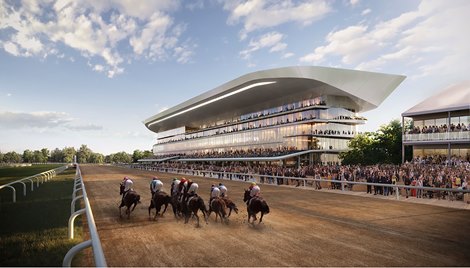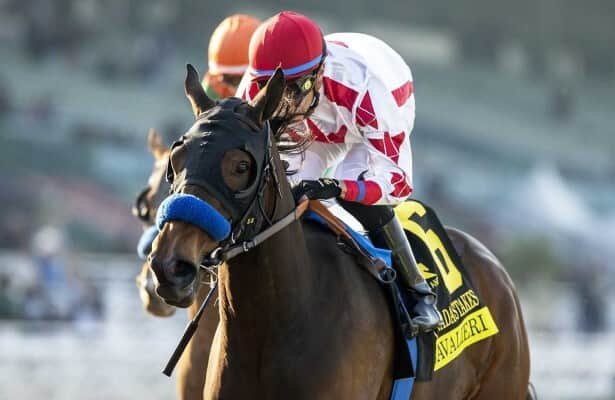Several years ago I visited a “racino” track where I was greeted by a brand-new, near-Vegas-level casino on the gaming side that, on the racing side, gave way to a dilapidated grandstand complete with warped floors.
For a sport that celebrates the good life, it’s surprising that most North American racing venues have been slow to the sporting facility boom.
At The Jockey Club’s Round Table on Matters Pertaining to Racing last month in Saratoga Springs, N.Y., Todd Gralla, an executive at Populous—a global architectural company at the forefront of new ballparks, stadiums, and arenas—said racing invested in online platforms over the past several decades and fell behind on its in-venue experience.
In a sport pressed for cash, investing in advance-deposit wagering made sense as a way to bring in revenue. But hopes it would also bring new fans have not come to fruition. A look at stagnant handle relative to inflation in recent decades suggests on-track players have moved to ADW platforms but those virtual platforms have not brought in new horseplayers.
It’s hard to appreciate a sport until you attend it in person, and too many of our tracks in recent years do not hold up as places most people would want to visit for three or four hours of racing. It’s been well documented that these venues are not up to the standards of major league facilities, but it’s also fair to say that many rank behind even minor league teams in sports such as baseball and soccer. The facility boom also reached these lower-tier sports while largely skipping racing.
Onto the good news: Churchill Downs Inc., which for years at its flagship track has bucked this trend by creating attractive seating options, continues to invest in the home of the Kentucky Derby (G1); the New York Racing Association is building a state-of-the-art home for the Belmont Stakes (G1), and Maryland appears poised for a new chapter—and most needed new facility—at Pimlico Race Course.
That would be three impressive venues for our Triple Crown races.
“This is our moment,” Gralla said. “We need to take the reins and urge this renaissance in racing ahead. We have people across the industry with the ambition and vision to reimagine how people experience horse racing and engage more people in this sport.”
Will this investment at the top be enough to inspire some regional track owners to make investments in their track frontsides? The sport needs such investment.
As much of a leader as CDI has been at the home of the Derby, it looked very much like a casino-first company when it decided to vacate racing at Arlington International Racecourse, one of the top racing facilities in the country. The company has followed by moving the Arlington Million (G1T) to Colonial Downs in New Kent, Va. As CDI figures to do very well with historical horse racing operations in Virginia, will the company be willing to invest in a better racing facility at Colonial—one that can bring people into the sport through big race days such as the Million or Virginia Derby day?
While there could be some hope CDI would embrace such an approach, as the company has seen it work, we’ve seen too many other racino-type tracks fail to invest in racing facilities. That approach of casino-focused owners allowing racing venues to fall behind has been a huge negative for the sport.
A recent Wall Street Journal story noted that many minor league baseball teams, with new venues that offer some of the comforts of major league venues but on a smaller level, have found a big market for fans looking for a luxury box experience without the exorbitant costs of top-level sporting events. The story notes that minor league venues are seeing friend and family groups spend $600 for an air-conditioned suite that includes food options people want.
The Buffalo Bisons baseball team reported it had sold out its 26 luxury suites for the season, even after raising prices 5.5%. There should be a similar opportunity here for smaller racing venues, if they’re willing to invest in their facilities and create an atmosphere people desire at the right price point. Remember, many of these track owners are not short on cash thanks to added gaming. For many it’s a matter of the owners being willing to invest in racing as a money-making opportunity as opposed to seeing it only as part of the expense of a gaming license.
Between its bursts of sporting excitement, race days have long stretches of down time. These lulls in the action can be opportunities to socialize, enjoy a meal, or take in some entertainment. Because of this, it could be argued racing needs venues with top seating options more than any other sport.
It’s good to see racing move in this direction at some of its top venues and we’d like to see additional tracks make this investment.
This is the What’s Going On Here column from the September issue of BloodHorse magazine.












